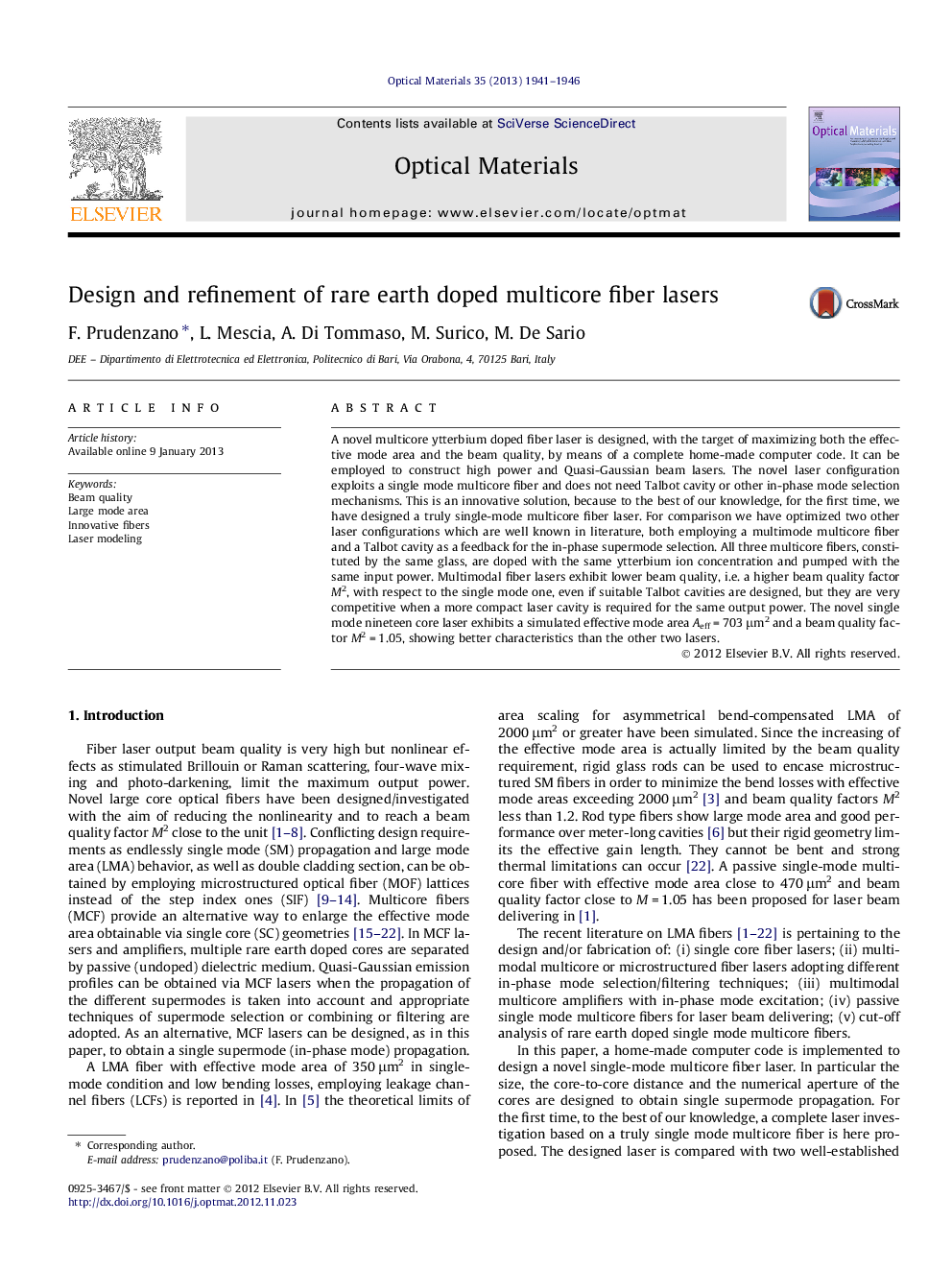| Article ID | Journal | Published Year | Pages | File Type |
|---|---|---|---|---|
| 1494479 | Optical Materials | 2013 | 6 Pages |
A novel multicore ytterbium doped fiber laser is designed, with the target of maximizing both the effective mode area and the beam quality, by means of a complete home-made computer code. It can be employed to construct high power and Quasi-Gaussian beam lasers. The novel laser configuration exploits a single mode multicore fiber and does not need Talbot cavity or other in-phase mode selection mechanisms. This is an innovative solution, because to the best of our knowledge, for the first time, we have designed a truly single-mode multicore fiber laser. For comparison we have optimized two other laser configurations which are well known in literature, both employing a multimode multicore fiber and a Talbot cavity as a feedback for the in-phase supermode selection. All three multicore fibers, constituted by the same glass, are doped with the same ytterbium ion concentration and pumped with the same input power. Multimodal fiber lasers exhibit lower beam quality, i.e. a higher beam quality factor M2, with respect to the single mode one, even if suitable Talbot cavities are designed, but they are very competitive when a more compact laser cavity is required for the same output power. The novel single mode nineteen core laser exhibits a simulated effective mode area Aeff = 703 μm2 and a beam quality factor M2 = 1.05, showing better characteristics than the other two lasers.
Graphical abstractFigure optionsDownload full-size imageDownload high-quality image (73 K)Download as PowerPoint slideHighlights► A novel multicore ytterbium doped fiber laser is designed to maximize both the effective mode area and the beam quality. ► A complete home-made computer code is written. ► Talbot cavity is considered for the in-phase supermode selection of two multimodal multicore fiber lasers here optimized. ► Single mode multicore fiber laser shows higher performance than multimode ones, even a longer fiber cavity is required.
